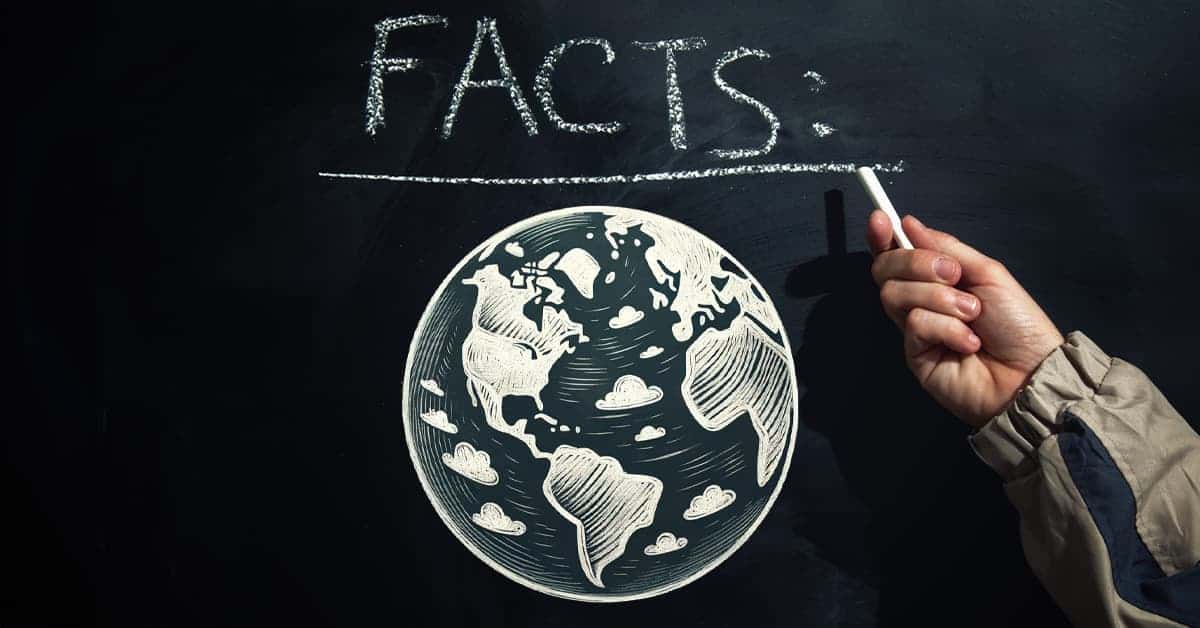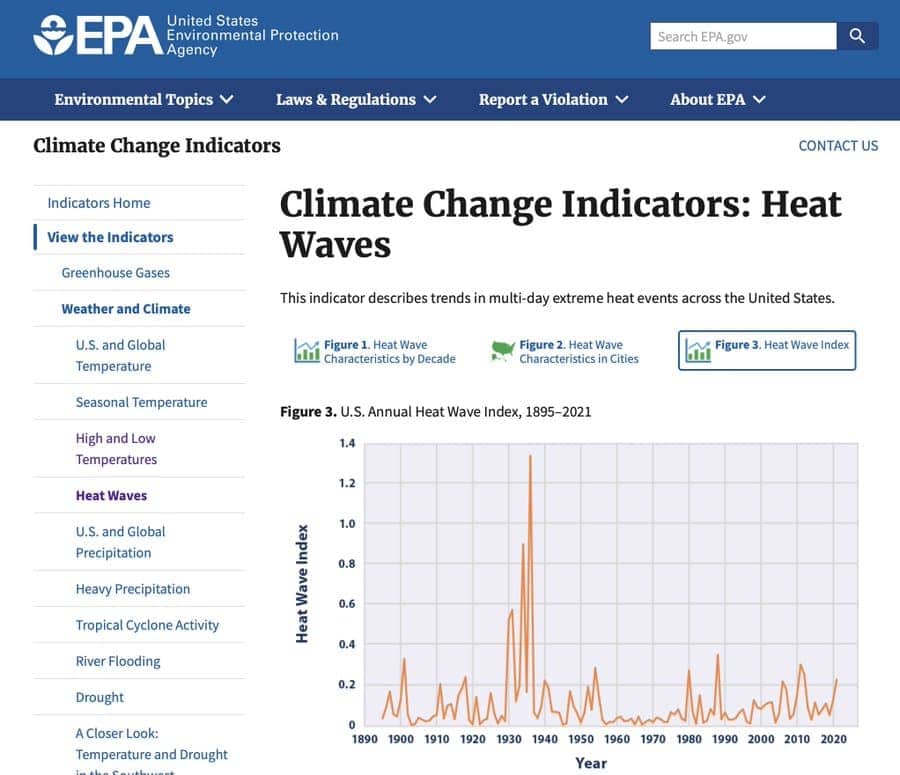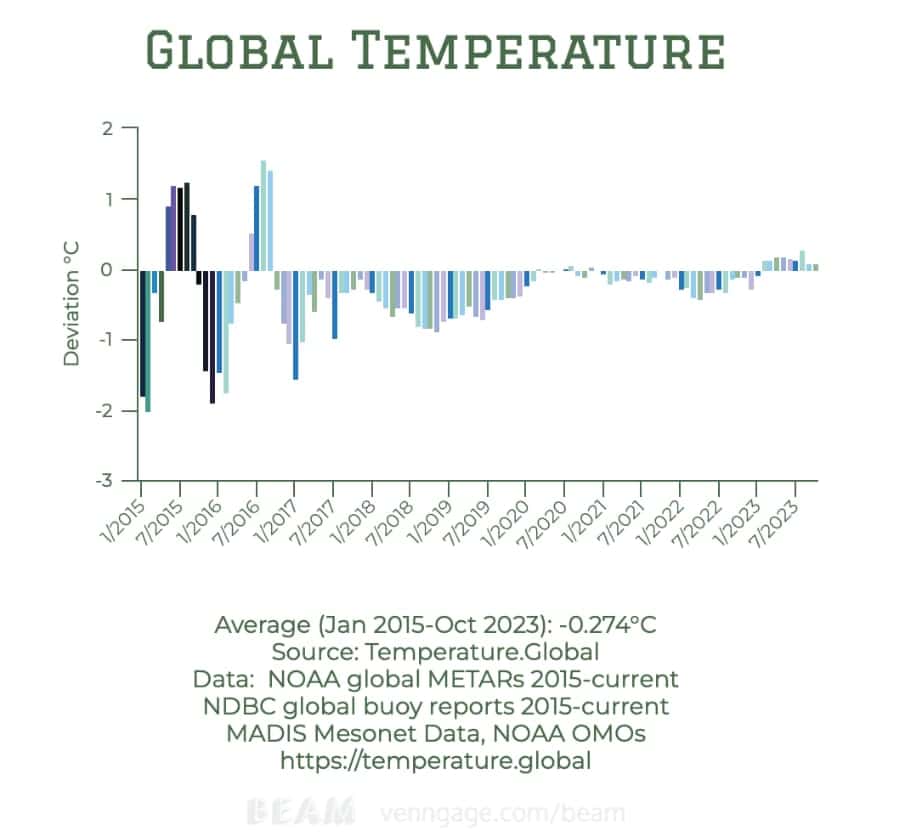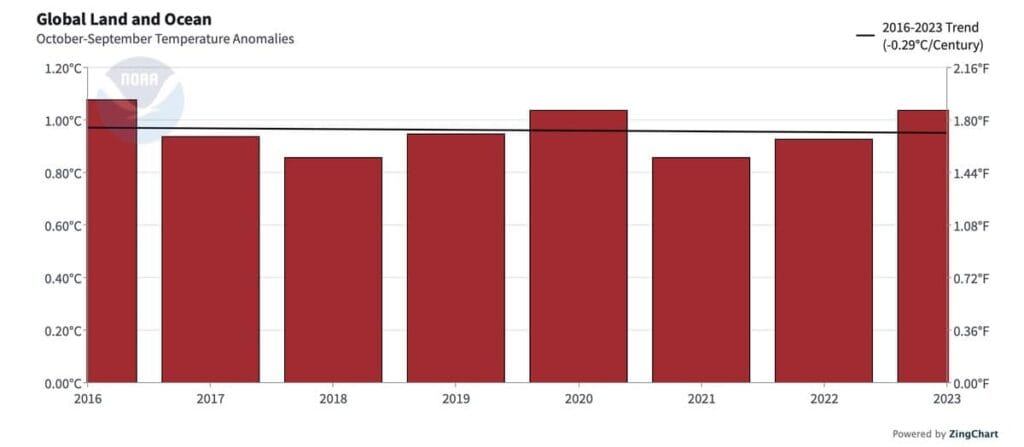by Tom Harris, America Outloud:

With the 2023 United Nations Climate Change Conference starting later this month in Dubai, we will soon face an avalanche of climate alarmism that will take us well into the holiday season. “The Science is clear—without drastic action, we face a planetary climate emergency!” will be the clarion cry from annoying family members who just won’t shut up about the supposed climate crisis, even in the middle of Christmas dinner.
It’s therefore important that we start to bone up on the many simple points you can bring up to calm frightened relatives and guide your next family gatherings back to more pleasant topics.
TRUTH LIVES on at https://sgtreport.tv/
Readers will be happy to hear that this year, that task has been made much simpler with the release of entertaining, easy-to-understand CLIMATE FACT CHECKS at the beginning of every month. Since the start of the year, a group led by Steve Milloy, a widely recognized leader in the fight against junk science and the publisher of JunkScience.com, has been digging into the climate science facts that put the lie to the alarmism we see every day in mainstream media. Besides Mr. Milloy, who writes most of the fact checks, and the group I lead, the International Climate Science Coalition (ICSC), these brief but important documents are presented by the Competitive Enterprise Institute, The Heartland Institute, Energy & Environment Legal Institute, Committee for a Constructive Tomorrow, and Truth in Energy and Climate.
To read the climate facts the media got wrong in the previous month, just visit the ICSC website and click on the fact check banner at the top of the page. Right now, for example, you will see the following image, which links to the September fact check:
Readers can peruse all the fact checks released in 2023 at Mr. Milloy’s Junk Science site as follows:
- CLIMATE FACT CHECK 2022
- CLIMATE FACT CHECK: SEPTEMBER 2023 EDITION
- CLIMATE FACT CHECK: AUGUST 2023 EDITION
- CLIMATE FACT CHECK: JULY 2023 EDITION
- CLIMATE FACT CHECK: JUNE 2023 EDITION
- CLIMATE FACT CHECK: MAY 2023 EDITION
- CLIMATE FACT CHECK: APRIL 2023 EDITION
- CLIMATE FACT CHECK: MARCH 2023 EDITION
- CLIMATE FACT CHECK: FEBRUARY 2023 EDITION
- CLIMATE FACT CHECK: JANUARY 2023 EDITION
Invest 20 minutes each day for the next ten days reading these, and you will be well-equipped to slay whatever climate alarmism threatens your next family gathering.
To whet readers’ appetites for the “CLIMATE FACT CHECK: OCTOBER 2023 EDITION” about to be released, here is a sneak peek of some of what you will see in the days to come:
“… the estimated average global temperature based on Temperature.global’s real-time surface stations measurements reported October [is] no big deal temperature-wise, even continuing the trend of global cooling reported since its record began in January 2015.”
‘Sizzling’ September? The Associated Press reported that “September sizzled to records and was so much warmer than average scientists call it ‘mind-blowing’: “After a summer of record-smashing heat, warming somehow got even worse in September as Earth set a new mark for how far above normal temperatures were, the European climate agency reported Thursday.”
Fact Check: If September was “sizzling,” it’s not showing up in the data maintained by the National Oceanic and Atmospheric Administration (NOAA)—that data report global cooling for the eight years from October 2015 through September 2023.
Summers getting hotter? The New York Times reported in “It’s Not Your Imagination. Summers Are Getting Hotter” that: “To understand how summers have changed, [James Hansen and others] compared local summer temperatures over land for each decade since the 1950s to the average summer temperature for the location between 1951 and 1980, their baseline period.”
Fact check: Even the EPA acknowledges that the 1930s summers (as measured by heat waves) were much “hotter” than today, despite being many emissions ago. Unfortunately for the New York Times, Hansen’s “analysis” conveniently starts in the 1950s, completely ignoring the 1930s.
Butterflies hurt by warming? New York Times columnist and climate alarmist Margaret Renkl wrote in “What Climate Change Does to My October Garden” that: “This year, September brought only the barest handful of butterflies [to my Middle Tennessee garden]… It’s impossible not to wonder if that heat had anything to do with the butterflies missing from my pollinator garden. This summer was the hottest on record, and September followed suit… I know that insect reproduction is affected by temperature.”
Read More @ AmericaOutloud.news






